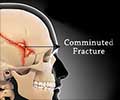Highlights
- Skull flattening or deformational plagiocephaly due to sleep position can be treated with helmet therapy otherwise called as molding orthosis.
- In molding orthosis, a //customized helmet is used to modify the growth and enables the correction of existing deficits.
- Starting the therapy before 24 weeks of age increases the chances of success.
Effect of Age On The Treatment
To find out if age has an impact on the success of the treatment, a total of 144 patients with deformational plagiocephaly were divided into three groups based on age and two groups based on severity. The success of the treatment was defined as perceived minimal remaining skull asymmetry.
The effect of molding orthosis was examined in all three age groups (group I, <24 weeks; group II, ≥24 to <32 weeks; and group III, ≥32 weeks).
The other group had two severity levels (mild to moderate, 30-degree cranial vault asymmetry ≥3 mm to ≤12 mm; and moderate to severe, 30-degree cranial vault asymmetry >12 mm). Using three-dimensional stereophotogrammetry the extent of the reduction of asymmetry was analyzed.
Study Results
For those between 24 and 32 weeks the success rate decreased to 69 percent and in those with 32 weeks or older, the success rate went down to 40 percent.
Younger age at treatment also led to a higher success rate for infants with moderate-to-severe plagiocephaly: 50 percent, 30 percent and seven percent, respectively. For infants with early treatment, the duration was 19 weeks while for those with later treatment it was 25 weeks.
The new study did not only use the 3D imaging technique stereophotogrammetry in infants for the first time, it also used real 3D volumetric parameters for analyzing skull asymmetries to investigate the effect of age at start of helmet therapy. Stereophotogrammetry is a precise method for diagnosis and evaluation of skull shape.
Helmet therapy should be started early in infants with mild plagiocephaly especially in those who don’t respond to other treatments. Active repositioning and physical therapy are the other alternative treatments for plagiocephaly.
Dr. Kunz said, "Age and severity have a very significant effect on the reduction in skull asymmetry with helmet therapy. Our study includes an equation that the treating surgeon or physician can use to provide an individualized estimate of the expected reduction in skull asymmetry with helmet therapy."
Reference
- Felix Kunz et al., Head Orthosis Therapy in Positional Plagiocephaly: Influence of Age and Severity of Asymmetry on Effect and Duration of Therapy, Plastic & Reconstructive Surgery (2017) doi: 10.1097/PRS.0000000000003517
Source-Medindia












